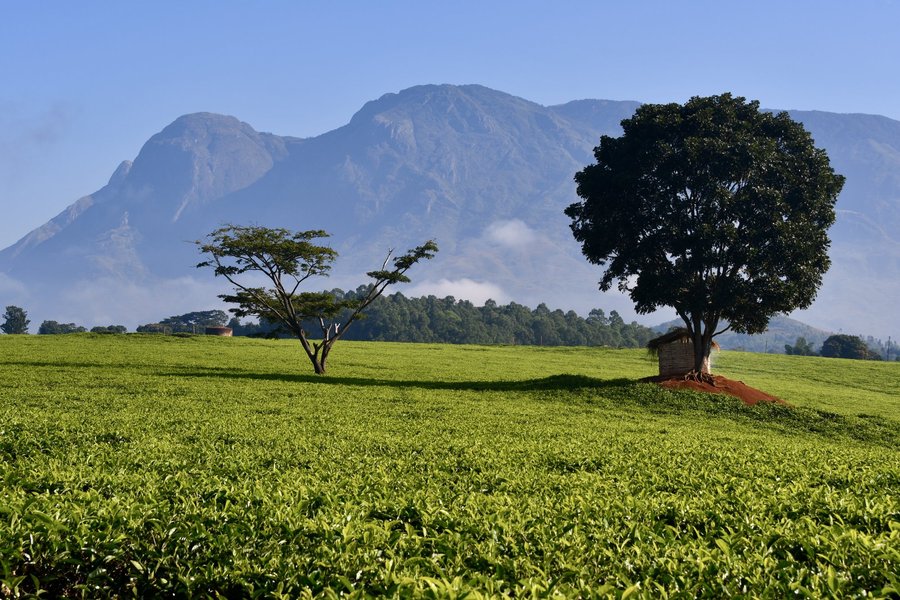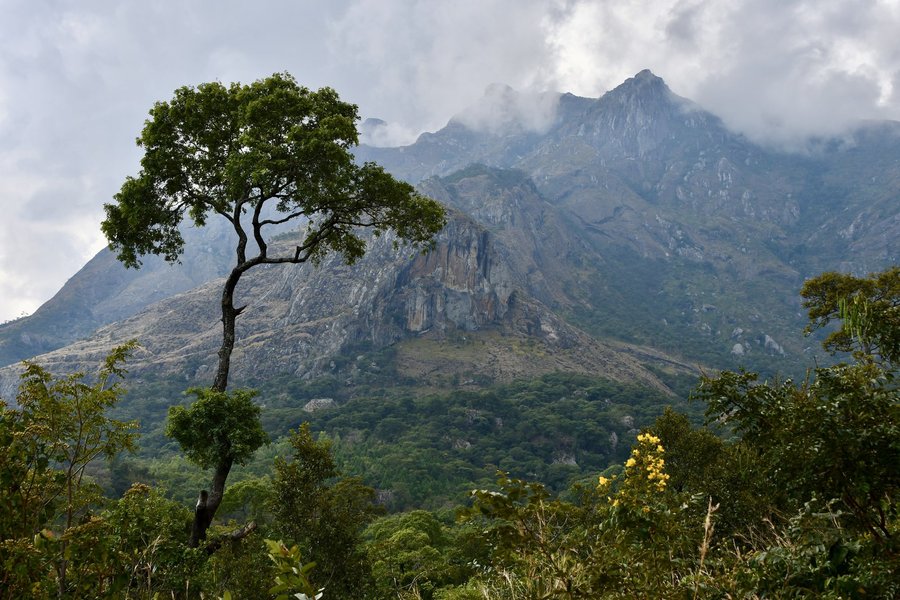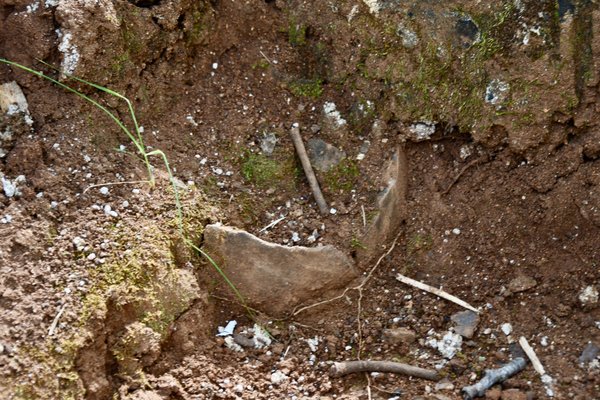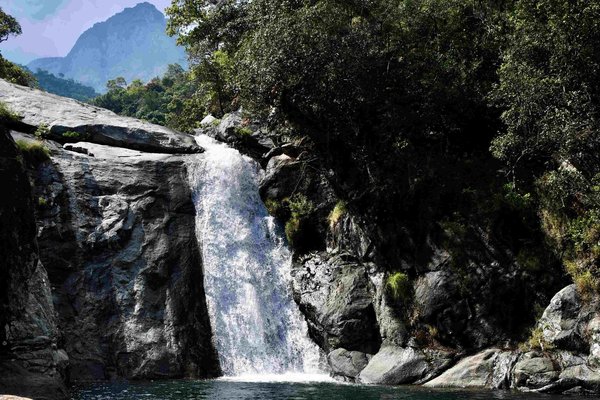Malawi
Mount Mulanje Cultural Landscape
Mount Mulanje Cultural Landscape (MMCL) is a place of spiritual significance to the Mang’anja, Yao and Lhomwe people.
Mulanje Mountain is the highest in Malawi and among the largest inselbergs in the world. Its natural features, such as the mountain top, pools, caves and waterfalls, are considered to have spiritual powers. Shrines and sacrificial sites have been built for veneration and are still in use.
Community Perspective: Randi and Svein Elias visited on the day of its inscription as a WHS.
Site Info
Official Information
- Full Name
- Mount Mulanje Cultural Landscape (ID: 1201)
- Country
- Malawi
- Status
-
Inscribed 2025
Site history
History of Mount Mulanje Cultural Landscape
- 2025: Advisory Body overruled
- ICOMOS wanted Refer because of lacking buffer zone and legal protection
- 2025: Inscribed
- Meets criterion 3 and 6
- 2023: Incomplete - not examined
- 2014: Deferred
- As "Mount Mulanje Cultural Landscape"
- 2000: Added to Tentative List
- Added to tentative list
- Type
- Cultural
- Criteria
- iii
- vi
Links
- UNESCO
- whc.unesco.org
All Links
UNESCO.org
- whc.unesco.org — whc.unesco.org
News Article
- April 11, 2013 travpr.com — Dossier for Mount Mulanje submitted to Unesco
Community Information
- Community Category
- Cultural Landscape: Associative
Travel Information
Recent Connections
-
Built or owned by British
Fort Lister (link)
-
Cedar forests
"contains the entire known effective po…
-
Taboo
"based on established spiritual practic…
Connections of Mount Mulanje Cultural Landscape
- Trivia
-
-
Built or owned by British
Fort Lister (link)
-
- History
-
-
Iron Age
"it has been attested that people were present around the place from at least the Middle Stone Age through Late Stone Age to Iron Age" (ICOMOS ev)
-
- Ecology
-
-
Granite rock formations
"this vast granite massif" (ICOMOS ev)
-
Inselbergs
Mount Mulanje, among the largest inselbergs in the world (ICOMOS ev)
-
Cedar forests
"contains the entire known effective population of endemic and iconic species, such as the critically endangered (CR) Mulanje Cedar (Widdringtonia whyteii))" (IUCN ev)
-
- Religion and Belief
-
-
Sacred Mountains
"The spiritual power of Mount Mulanje can be harnessed by diviners and spiritual healers" (ICOMOS ev)
-
Taboo
"based on established spiritual practices and taboos" (ICOMOS ev)
-
- Human Activity
-
-
Coffee
"Simultaneously, first cotton, tobacco and coffee plantations developed around Mulanje, later replaced mostly by tea estates" (ICOMOS ev)
-
Pictographs
The Machemba rock shelter is covered with geometric rock art paintings dated to the Stone Age. (ICOMOS ev)
-
Tobacco
"Simultaneously, first cotton, tobacco and coffee plantations developed around Mulanje, later replaced mostly by tea estates" (ICOMOS ev)
-
Tea
"tea estates which are still a significant feature of the landscape today. Among the oldest in Africa, the tea estates that spread in the southern part of the nominated property" (ICOMOS ev)
-
- WHS on Other Lists
-
-
Cultural WHS set within an IUCN recognised protected area
Includes the entirety of two adjacent but distinct protected areas: Mulanje Mountain Forest Reserve and the Michese Forest Reserve. These are both national forests and categorized as IUCN Category VI protected areas (IUCN ev)
-
World Biosphere Reserves
IUCN also notes that the Mount Mulanje Biosphere Reserve overlaps with the nominated property (IUCN ev)
-
News
- travpr.com 04/11/2013
- Dossier for Mount Mulanje submitte…
Recent Visitors
- Roman Bruehwiler
- Ali Zingstra
- Marlies van Wolfswinkel
- Александар Стојиљковић
- Svein Elias
- Randi Thomsen
Visitors of Mount Mulanje Cultural Landscape
Community Reviews
Show full reviews
Randi has now covered our visit so I will cover some practicalities.
Lodging
We stayed at African Wild Truck, it is on booking.com. A great place to stay, nice location and very friendly staff made our stay comfortable.
The lodge is about 20 km beyond the town of Mulanje. Google maps doesn’t show correct route for last few km’s so a more precise description is required. The lodge doesn’t appear on maps.me.
Getting there
There are regular flights to Chileka Blantyre. From there it’s round 100 km to the African Wild Truck lodge on the south side of the mountain range. We asked the lodge to arrange transport, but a bit of poor communication made us find transport on our own. We got a car driver who took the job for USD 70 (which is better than the USD 115 the lodge suggested). I’m sure its possible to make an even better bargain.
The roads are good (only a few potholes) and we needed a vehicle to get from the lodge to the trail start the next day - so in retrospect a rental car would be better.
GuideWe recommend having a guide to understand the OUV. We were very satisfied with our guide, good English speaking and knowledgeable. He was arranged via the the lodge, but his contact details are Comestar Supuni. He runs his own company, Guidestar Adventure ToursPhone number/ whatsup +265 881474895.
Entrance fee to the park is 2500 qwatcha for two persons, about € 1.25.
Keep reading 0 comments
Visit July 2025. When the nominations and evaluations for this year’s World Heritage session were published, we decided to carve out time in our itinerary for a short visit to the Mulanje Mountains in southern Malawi. On our way from Dar es Salaam to Johannesburg, we managed a stopover in Blantyre and booked a place to stay—as there aren’t many accommodation options near the mountain.
No sooner had we pulled into the lodge than the World Heritage session began—and just hours later, Mulanje was officially inscribed. Talk about timing. From our lodge, we had a stunning view of the mountain range, with vivid green tea plantations spread out in the foreground.
The next day, we set off on a day hike with a local guide.
Mount Mulanje is best known for its dramatic peaks, deep forests, and rich biodiversity. But beyond its natural beauty, the mountain holds deep cultural significance. Rising steeply from the plains to 3,002 meters at Sapitwa Peak, it is considered sacred by many of the local communities living around it.
Most visitors come here to climb the mountain—it’s usually a three-day trek—but we opted for a one day hike. Interestingly, Mulanje was not inscribed for its natural features or geological value, but for cultural reasons.
For the local Lomwe people, the mountain is deeply intertwined with myths, ancestral spirits, and traditional rituals. It is seen as a dwelling place for spirits and a source of spiritual guidance and protection. Certain sites on the mountain are used …
Keep reading 2 comments



